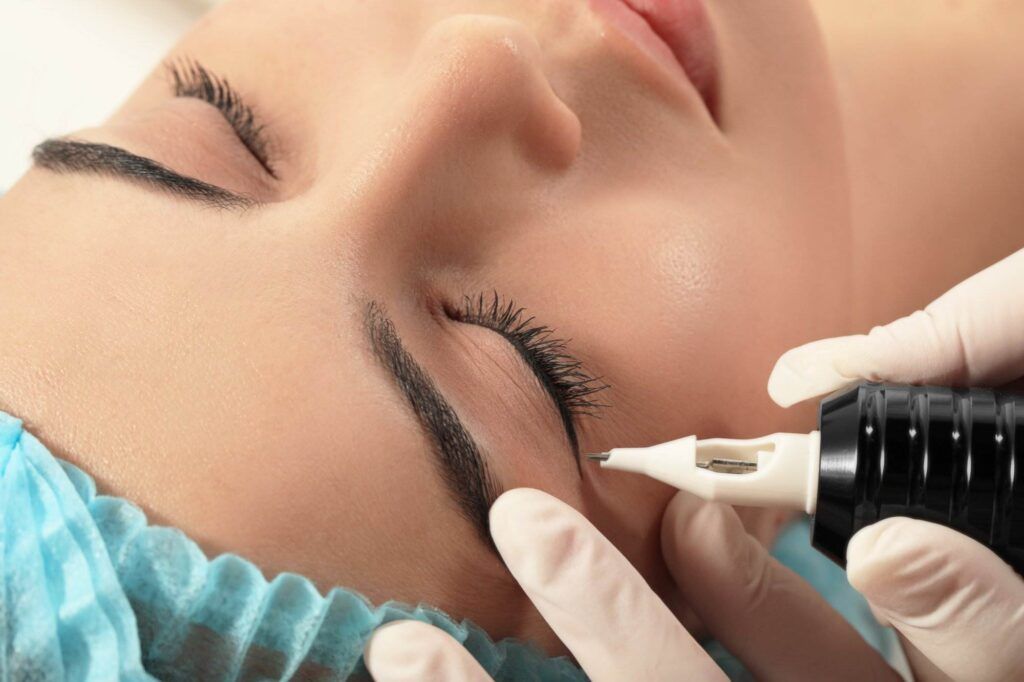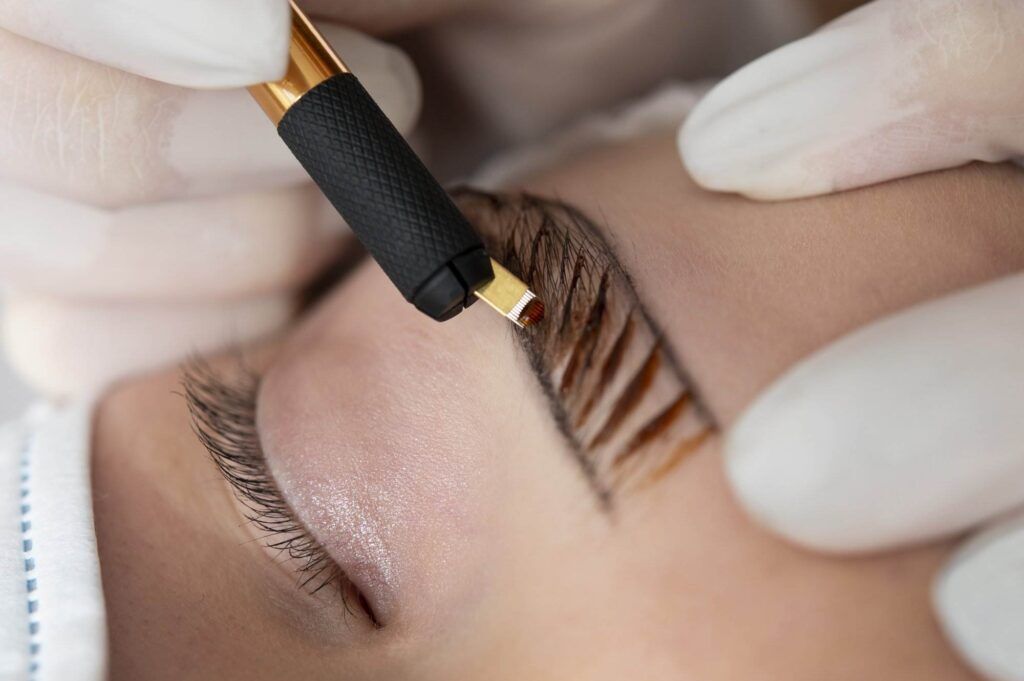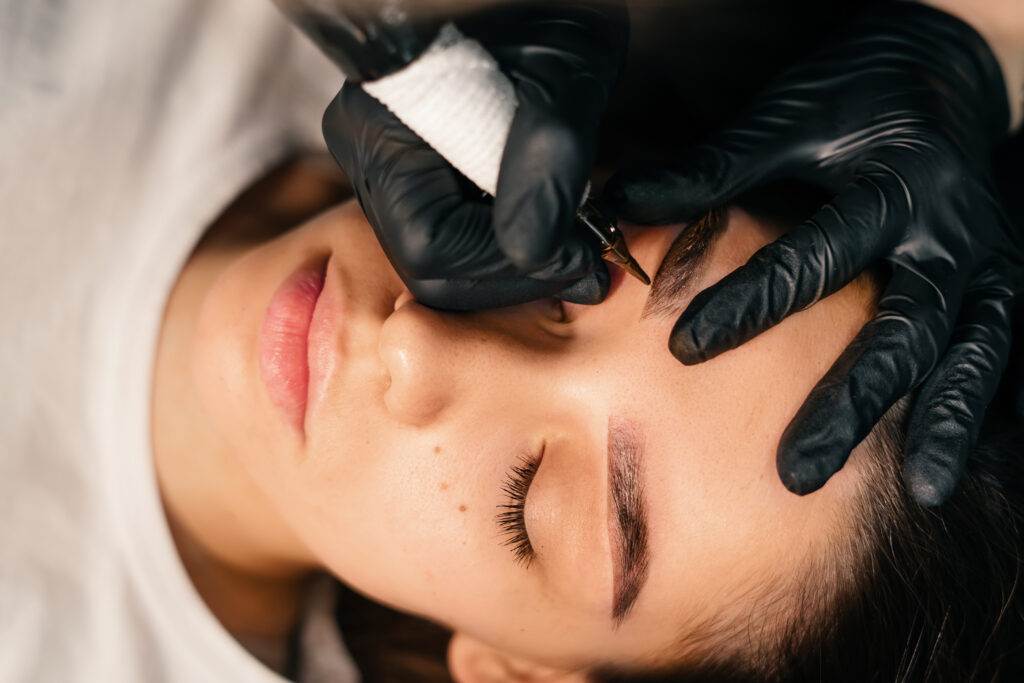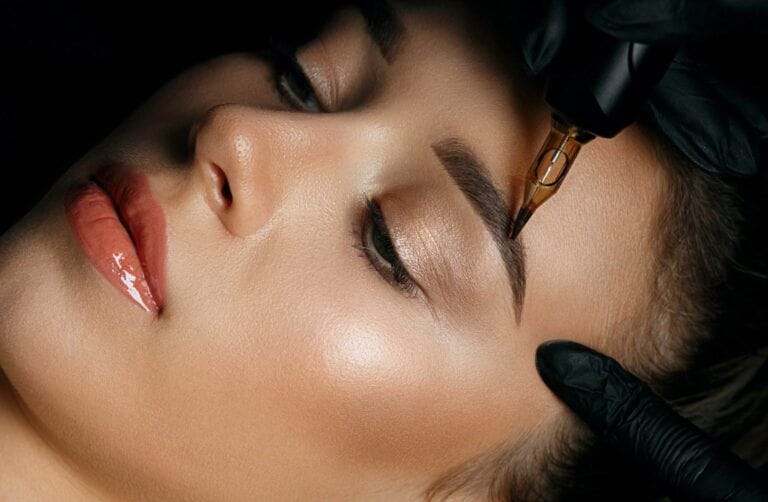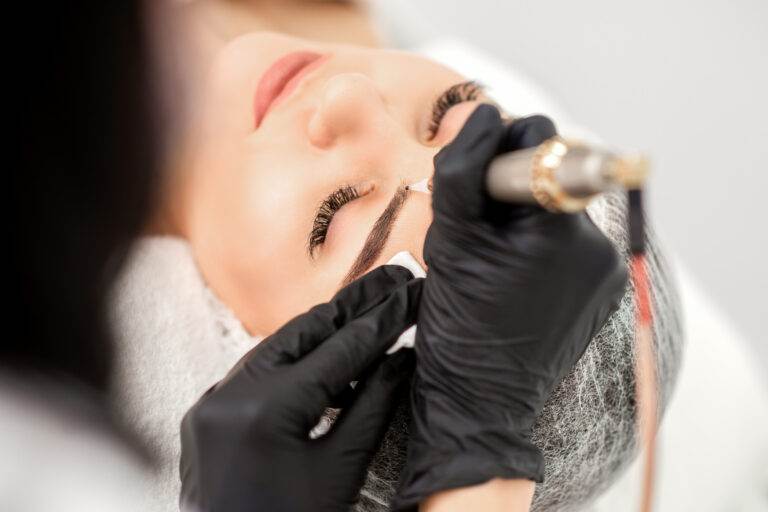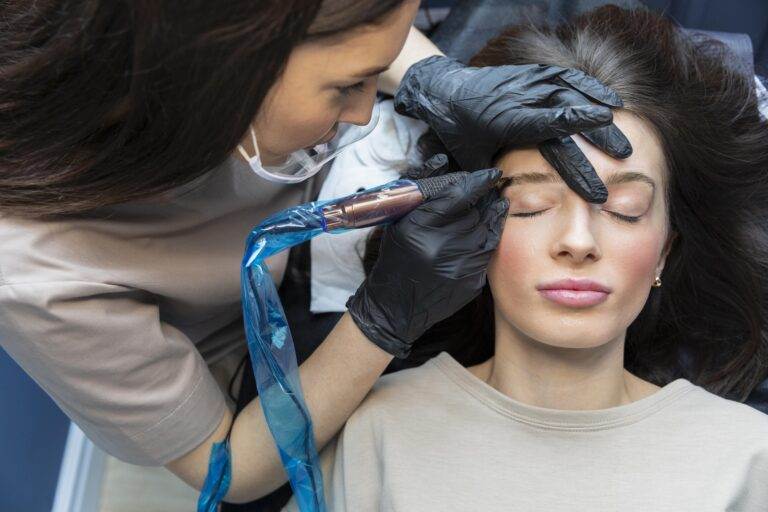Key Takeaways
- Microblading creates hair-like strokes for a natural look, while powder brows create a soft and diffused look.
- Microblading results can last 1-3 years, while powder brows can last 2-3 years.
- Microblading may cause more discomfort during the procedure compared to powder brows.
- Both microblading and powder brows require regular touch-ups for maintenance.
- Factors to consider when choosing between microblading and powder brows include skin type, desired look, and lifestyle.
Understanding the Basics: Microblading vs. Powder Brows
In the ever-evolving world of beauty and personal grooming, the quest for the perfect brows has become a top priority for many individuals. Two of the most popular brow enhancement techniques that have gained significant attention in recent years are microblading and powder brows. As these techniques continue to gain popularity, it’s essential to understand the key differences between them to make an informed decision about the best option for your unique needs and preferences.
Microblading and powder brows are both semi-permanent makeup procedures that aim to enhance the appearance of the eyebrows. However, the techniques used to achieve the desired results differ significantly. Microblading is a manual process that involves the use of a specialized tool to create fine, hair-like strokes, while powder brows utilize a machine-based approach to apply a soft, diffused pigment to the brow area. Understanding these fundamental differences is crucial in determining which technique aligns best with your aesthetic goals and personal preferences.
The Microblading Technique: Precision and Natural Results
Microblading is a meticulous process that involves the use of a specialized tool, known as a microblading pen, to create fine, hair-like strokes on the brow area. The technician carefully and precisely deposits pigment into the upper layers of the skin, mimicking the appearance of natural brow hairs. This technique is renowned for its ability to create a natural, feathered look that seamlessly blends with the client’s existing brow hairs.
One of the primary advantages of microblading is its versatility in terms of brow shape and thickness. The technician can customize the strokes to achieve a variety of brow styles, from bold and defined to soft and wispy. This flexibility allows clients to tailor the look to their individual facial features and personal preferences. Additionally, the precision of the microblading technique ensures that the results appear effortless and natural, enhancing the brows without looking overly done or artificial.
Another key benefit of microblading is its ability to create the illusion of fuller, more defined brows. This can be particularly beneficial for individuals with sparse or uneven brow hair growth, as the technique can help to fill in gaps and create a more symmetrical and balanced appearance. The long-lasting results of microblading can also provide a confidence boost, as clients can enjoy their enhanced brows for an extended period without the need for daily makeup application.
Powder Brows: A Soft and Diffused Brow Look
In contrast to the precise, hair-like strokes of microblading, powder brows offer a softer, more diffused brow appearance. This technique utilizes a machine-based approach to apply a powdery pigment to the brow area, creating a shaded, makeup-like effect. The result is a natural-looking, yet defined brow that can be tailored to various styles and preferences.
One of the key advantages of powder brows is the soft, blended look they create. The diffused pigment application results in a seamless, shaded appearance that can be particularly flattering for individuals with oily skin or those who prefer a more subtle, everyday brow look. The versatility of powder brows also allows for the creation of a range of brow styles, from bold and defined to more natural and feathered.
Another benefit of powder brows is the longevity of the results. The machine-based application of the pigment can result in a longer-lasting brow enhancement compared to traditional makeup techniques. This can be especially appealing for individuals with busy lifestyles who want to minimize the time and effort required for daily brow maintenance.
Longevity: How Long Do the Results Last?
| Criteria | Microblading | Powder Brows |
|---|---|---|
| Technique | Hand-drawn hair strokes | Soft, shaded effect |
| Duration | 1-2 years | 2-3 years |
| Healing Time | 1-2 weeks | 2-4 weeks |
| Touch-up Frequency | 6-12 months | 12-18 months |
| Recommended for | Natural, defined look | Bolder, filled-in look |
When it comes to the longevity of the results, both microblading and powder brows offer long-lasting solutions, but the duration can vary depending on several factors. Generally, microblading results can last anywhere from 12 to 18 months, while powder brows may have a slightly longer lifespan of 18 to 24 months.
The longevity of the results is influenced by various factors, including skin type, sun exposure, and the client’s adherence to the recommended aftercare instructions. Individuals with oily skin or those who are exposed to significant sun exposure may experience faster fading of the pigment, requiring more frequent touch-ups to maintain the desired brow appearance.
It’s important to note that both microblading and powder brows are considered semi-permanent, meaning that the results will gradually fade over time. Regular touch-up appointments are typically recommended to ensure the longevity and vibrancy of the brow enhancement. The frequency of these touch-ups can vary depending on the individual’s skin type, lifestyle, and personal preferences.
Pigment Retention: Comparing Microblading and Powder Brows
Pigment retention is a crucial factor when it comes to the longevity and overall appearance of brow enhancement techniques. Both microblading and powder brows have their unique characteristics when it comes to pigment retention.
Microblading, with its precise, hair-like strokes, tends to have a slightly higher rate of pigment retention compared to powder brows. The manual application of the pigment into the upper layers of the skin allows for a more targeted and controlled deposition of the color. This can result in a more vibrant and long-lasting brow appearance, particularly for individuals with normal to dry skin types.
On the other hand, powder brows, with their machine-based application, may experience a slightly faster rate of pigment fading over time. The diffused nature of the pigment application can lead to a more gradual and subtle fading, which some clients may prefer for a more natural-looking brow appearance.
It’s important to note that the success of pigment retention is also heavily dependent on the skill and experience of the technician performing the procedure. A skilled and experienced brow technician can ensure optimal pigment retention, regardless of the technique used, by carefully considering the client’s skin type, lifestyle, and personal preferences.
Pain and Discomfort: What to Expect During the Procedures
When it comes to the level of pain and discomfort associated with brow enhancement procedures, both microblading and powder brows can be considered relatively comfortable, but there are some differences to be aware of.
Microblading, being a manual process that involves the use of a specialized tool, is generally perceived as the more uncomfortable of the two techniques. The sensation has been described as similar to the feeling of small scratches or light scraping on the brow area. However, the discomfort is typically manageable, and many clients report that the pain is tolerable, especially with the use of a numbing cream applied prior to the procedure.
Powder brows, on the other hand, are often considered less painful due to the machine-based application of the pigment. The sensation has been described as a light vibration or a gentle tapping on the brow area. While some clients may still experience mild discomfort, the overall pain level is generally lower than that of microblading.
It’s important to note that individual pain tolerance can vary, and factors such as skin sensitivity, anxiety levels, and the skill of the technician can all play a role in the level of discomfort experienced during the procedures. Clients are encouraged to discuss their concerns with their chosen technician and explore options for minimizing discomfort, such as the use of numbing creams or other pain management techniques.
Maintenance and Aftercare: Keeping Your Brows Looking Their Best
Proper maintenance and aftercare are crucial for ensuring the longevity and health of both microbladed and powder brow results. Each technique requires specific post-procedure care instructions to be followed diligently to achieve the best possible outcomes.
For microblading, the aftercare process typically involves keeping the brows clean and moisturized, avoiding direct sun exposure, and refraining from activities that may cause excessive sweating or water exposure. Clients are also advised to avoid picking or peeling the treated area, as this can disrupt the healing process and lead to uneven or patchy results.
Powder brows, on the other hand, require a slightly different aftercare regimen. Clients are often advised to gently cleanse the brow area, apply a thin layer of ointment, and avoid direct sun exposure and water contact. Additionally, they may be instructed to avoid activities that could cause excessive friction or pressure on the brows, such as sleeping on their side or wearing tight-fitting hats or headbands.
Adhering to the technician’s specific aftercare instructions is essential for both microblading and powder brows. Failure to do so can result in premature fading, uneven pigment distribution, or even potential complications, such as infection or allergic reactions. By following the recommended aftercare guidelines, clients can ensure the longevity and optimal appearance of their brow enhancement results.
Choosing the Right Option: Factors to Consider
When deciding between microblading and powder brows, there are several key factors to consider to ensure you make the best choice for your individual needs and preferences.
One of the primary factors to consider is your personal aesthetic goals. If you’re seeking a more natural, feathered brow appearance, microblading may be the better option. Conversely, if you prefer a softer, more diffused brow look, powder brows may be the more suitable choice.
Another important factor to consider is your skin type. Individuals with oily or combination skin may find that powder brows are more suitable, as the diffused pigment application can better withstand the skin’s natural oils. Conversely, those with normal to dry skin may benefit more from the precision and longevity of microblading.
Lifestyle and personal preferences also play a significant role in the decision-making process. If you have an active lifestyle or engage in activities that may cause excessive sweating or water exposure, powder brows may be the more practical option, as they tend to be more resilient to these factors.
Ultimately, the decision between microblading and powder brows should be made in consultation with a skilled and experienced brow technician. They can provide personalized guidance based on your unique facial features, skin type, and aesthetic goals, helping you make an informed decision that aligns with your individual needs and preferences.
Consulting with a Professional: Finding the Perfect Brow Solution
When it comes to achieving the perfect brow enhancement, working with a skilled and experienced brow technician is crucial. These professionals have the expertise and knowledge to assess your individual needs, provide personalized recommendations, and ensure the best possible results.
During the consultation process, the technician will carefully evaluate your facial features, skin type, and personal preferences to determine the most suitable brow enhancement technique. They will also discuss the expected results, the procedure process, and the necessary aftercare instructions to ensure you are fully informed and prepared for the treatment.
It’s important to research and evaluate potential brow technicians thoroughly. Look for individuals with extensive training, certifications, and a proven track record of delivering high-quality results. Checking online reviews, portfolios, and before-and-after images can also help you identify technicians who are known for their attention to detail and exceptional artistry.
Scheduling a consultation with a brow technician is the best way to determine the perfect brow solution for your unique needs. During this meeting, you can ask questions, voice your concerns, and work collaboratively to develop a customized plan that aligns with your aesthetic goals and personal preferences. By taking the time to find the right technician, you can ensure that your brow enhancement journey is a positive and rewarding experience.
FAQs
What is microblading?
Microblading is a semi-permanent makeup technique that uses a small handheld tool to create fine, hair-like strokes on the skin to enhance the appearance of eyebrows.
What are powder brows?
Powder brows, also known as ombre brows, is a semi-permanent makeup technique that uses a machine to create a soft, powdered look on the eyebrows, similar to the effect of wearing makeup.
How long does microblading last?
Microblading typically lasts 1-3 years, depending on factors such as skin type, aftercare, and lifestyle.
How long do powder brows last?
Powder brows can last 2-3 years, depending on similar factors such as skin type, aftercare, and lifestyle.
Which technique is best for me?
The choice between microblading and powder brows depends on individual preferences, skin type, and desired results. It is recommended to consult with a professional to determine the best technique for your specific needs.

